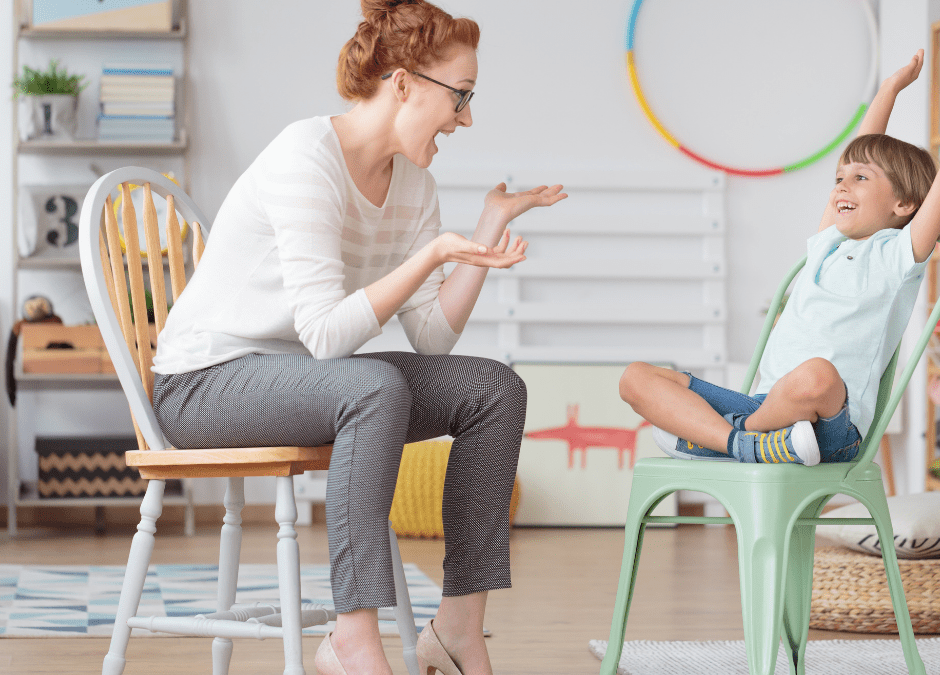Table of Contents
Parents play a major role in helping children with ADHD. These children need the understanding and guidance of their parents, including teachers and other adults around them, in order for them to reach their full potential. Prior to diagnosis, families of children with ADHD may have dealt with anger, guilt, blame, and frustration over the child’s condition. Family members should be given assistance in overcoming the negative feelings, in order for them to be better at handling the stress of raising a child with ADHD. Educate the family on what ADHD is, the symptoms, the treatments and how to effectively deal with the associated behaviors.
Some of the common situations where problems may arise include:
- getting your child to sleep at night
- arriving at school on time
- listening to and carrying out instructions
- social occasions
- shopping
To effectively deal and prevent problems, follow these guidelines:
Rewards systems and consequences
Parents should learn how to institute a system of rewards and consequences when dealing with a child’s behavior. Give immediate feedback on certain behaviors. Do not wait for some time to pass, because chances are, the child already forgot the behavior and the events that lead to that specific conduct. Positive feedback is given to reinforce good behaviors and to encourage more of the desirable behavior in the future. Undesirable behaviors are ignored because even negative reactions are still attention that can reinforce a behavior. Redirect unruly behavior. If it gets out of control, use time-outs. Remove the child from the upsetting or stimulating situation and place him to a quiet room or corner. Stay with the child but do not try to talk, reason, and worse, argue with the child. Give him time to calm down.
Share positive, pleasant, relaxing activities with the child.
This will help the parents to recognize more of the child’s abilities rather than putting more focus on the negative aspect of ADHD symptoms. Parents should also take this opportunity to notice and praise the child for what he can achieve. This is also an opportunity for parents to recognize how to structure situations to help reduce the triggers of undesirable behaviors. Playmates may be limited to one to avoid overstimulation during playtime. Spending time with the child can also help parents know what tasks are too large for them to handle alone so that they can be able to divide the tasks into smaller ones.
Create a schedule
Children with ADHD learn to be organized and complete tasks when a routine is followed. It also reduces the stimulation that immediate changes in activities bring.
Follow the same routine every day, from the time the child wakes up until bedtime. Schedule all activities like taking a bath, eating meals, doing homework, indoor activities like painting, outdoor play like time in the sandbox, naps and snacks.
Bedtime rituals should also be followed every night. Brushing the teeth, washing up, changing into bedclothes, massages, bedtime stories, even the lights-out routine should all be the same each night. This will help in dealing with sleeping problems due to the medication or too much excess energy. Poor or inadequate sleep creates a vicious cycle. The child wakes up too stressed, making him irritable all day long. By the next bedtime, problems will again arise, creating the same pattern the next day.
Should there be any changes, like the need to travel, prepare the child in advance. Introduce the idea of a change in schedule days before it happens. Allow the child to get used to the idea of changing an activity before instituting the change. This way, stress and frustration is reduced, and the child is less likely to act up.
Organize the child’s things
Keep specific items in their own specific place. Backpacks are to be placed in the same corner every time. Toys are put back in the same toy bin. Clothes are hung on a specific peg. These things not only help the child learn how to organize, it also reduces frustrations when the specific item cannot be found.
Homework and notebook organizers help the child to finish tasks. Stress the importance of writing down what needs to be done and to bring home the necessary materials for these tasks.
Be clear and consistent with established rules
When a child acts out of line, reinforce the rules. Do not reprimand or give negative comments. They expect criticisms and ridicule from a lifetime of experience. Repeat the rules and the expected conduct. Give immediate and appropriate praise for good or positive behavior.
Give clear and concise instructions
Children with ADHD are easily overwhelmed with large tasks and complicated instructions. Break down what needs to be done in small easy steps. Be clear on how a task is to be done and what the expected results are.
Instead of giving general instructions like “clean the room”, be specific. Tell the child to “Put the green ball back to the blue toy box.” Instead of telling the child to finish homework, specifically tell the child to finish the Math assignment on pages 15-17 of his workbook.
Praise good behavior.
ADHD children are difficult. And dealing with them can be frustrating. But they do have their moments. It is important you pay attention. Use praise as a tool for disciplining the child. Use praises that are specific. Do not just say, “Excellent job.” If the child correctly followed previous instructions, state the specific reason why he is getting praised. For instance, say something like “Excellent job for remembering to put your plate in the sink when you’re finished just like I asked you.”
Notice good behavior. Be kind and generous with praises. Praise the child for playing quietly, for following instructions and for sitting still.
Teach the child Time-Out.
This does not have to seem like just another form of punishment but as a way to calm down when he is angered or to keep it down a notch when he is feeling over-stimulated. Emphasize it is not a punishment but a strategy. It is a skill that the kid can develop and it can be an effective work around tool for ADHD. It can also be applied to different situations too. Make the child choose a quiet space where he can find calm and peace.
Ignore slight misbehaviors.
ADHD children are known for being attention seekers. This is why it is important to spend positive time with the child. If he gets enough attention, he may not resort to doing things in an effort to attract attention. Alternatively, you can simply ignore these mild misbehaviors.
You do not have to notice every little action. If you are quite sure the child is misbehaving just to get some attention, resist. When the kid starts to whine, make loud noises, interrupt conversations or complain, ignore him. When you pay attention it only works to reinforce the behavior. The child figures out he can get your attention by misbehaving slightly, he is more likely to stick to this strategy. So if it is a mild misbehavior, let it pass.
Home and School Partnership
As a parent, it is important to help your child work it out in all aspects of his life. But the school also plays a major role. With home and school working hand in hand, the child can have an increased chance of succeeding academically. Work it out with your child’s teachers. With their help, create a better behavior management plan.
Certain modifications may be necessary. For instance, it would not be too much to ask the teacher to give your child additional time to finish tests. If it will help the child to complete work and focus more if placed in a quieter and smaller environment then such can be arranged. The reward system you enforce at home may also be used by the teacher as strategy to help reinforce good behavior in the child.
ADHD and Anger in Children
One of the more challenging issues that with children who have ADHD is anger. Reacting with anger is quite common. And it is your job to help the child manage such emotions. In addition to anger, children with ADHD may also be hypersensitive. When they are faced with frustrating and stressful situations, they may response with intense anger.
In addition to managing the emotions, children with ADHD also find it challenging to think their problems through before reacting. Understand that you may not be able to help the child eliminate anger altogether. However, you can help him manage intense reactions better so he does not have to lose control.
So how do you exactly teach anger management to a kid? Below are a few suggestions.
Get to know the triggers.
You may have witnessed plenty of meltdowns and at this point, you should already have pinpointed common situations or matters that upset the child so leading to intense fits of anger. Take note of these instances.
Is there a particular time during the day when your child seems to be angrier than usual? Is there a peak time? Do you see any patterns?
ADHD children do not respond to school like most kids do. After school, he may feel tired or hungry. The problem is he may not be able to find a way to release whatever he is bottled up inside. Ask again, does your child get frustrated with specific tasks either for school or at home?
When the medication starts to wear off, it could be a difficult time too. The bottom line is to take note of these triggers so you know the best way to catch an angry meltdown before it happens.
Intervene as early as possible.
Being aware of your child’s anger triggers allows you to intervene quickly and early. Your presence should serve as a calming one. If your kid responds to physical contact, use it to calm him down. You can rub his arm or his back. Teach your child some breathing techniques. Encourage him to count to 10 while breathing deeply. And to be more effective, do it with him. It can help him release pent-up emotions.
Teach him the value of time out.
Help your child realize that he does not have to respond to frustrating situations negatively. He can take time and cool down. But it can be challenging to teach him a time out skill during an anger fit. So, choose a time when your child is in a perfect mood and perfectly calm. At this time, he is most responsive to suggestion.
Talk with the kid about time-out and how he can use it. You can also turn this into a routine especially when you know his anger peak time is drawing near. Let him pick the spot. It could be a corner away from the craziness of the household. Make sure he understands how he can use time out when he is need of it.
When he does it, you can also guide him further by walking with him to the time out spot. Breathing exercises during a time out may help further. So do this with him. What you must avoid is to make an attempt to talk to him while he is angry. Wait it out until he is settled and completely calm. Praise him for being able to use time out effectively.
You can also encourage him to talk about what just happened. If he broke anything during his anger fit, help him understand there are other more productive ways of expressing his feelings. Suggest less harmful ways of releasing his emotions. And while you are talking to him, stay as calm as possible.
Put labels to feelings.
When you notice that your child starts to get frustrated with a task, teach your kid how to reflect upon it too. You can start by saying, “This homework is a little difficult. And I can see that you are getting a little frustrated about it.” These simple statements can enforce awareness. As your child becomes aware of his feelings, he learns to label them too.
When he comes home from school and you get a call from his teacher about having a rough time with his peers, sit him down. Talk to him about the way he felt in that situation. This will encourage him to use his own words in expressing his feelings.
Suggest.
Do not just tell your child what to do. It is important you give him a sense of control. Offer choices. For instance, when he is having a rough time with a certain chore like cleaning up after himself, you can help him by saying, “Do you want to put the race cars away first or pick up the papers?” Limit the choices. When you offer too many, he can get a little overwhelmed and that can possibly lead to over-stimulation. So, it may be wiser to limit your suggestions to three.
Make sure your child gets enough rest.
Another problem ADHD kids experience is trouble with sleep. When someone does not get enough rest as they should, irritability sets in. When your child does not get enough sleep during the night, he will have more difficulty dealing with stress. He becomes moody and easily frustrated. Help him by figuring out strategies that can improve the quality of his sleep. This way, he can better handle the stresses during the day
Show him good anger management skills.
How can you teach your child anger management skills when you also have trouble controlling yours? Teach him by example. Make it a point to respond to situations appropriately. Talk about the process with your child. Help him better understand it. Show him positive ways to respond to stressful situations better.
Adults may have ADHD, too. Signs include a history of failures in school, problems dealing with situations at work and difficulty maintaining relationships. They may also have a history of breaking the rules or laws like traffic violations. They are likely to engage in several activities at the same time, being all over the place, most of them unsuccessful endeavors. Adults with ADHD prefer doing quick fixes rather than go through all the steps to achieve a lasting and more rewarding result.






 I love to write medical education books. My books are written for everyone in an easy to read and understandable style.
I love to write medical education books. My books are written for everyone in an easy to read and understandable style.